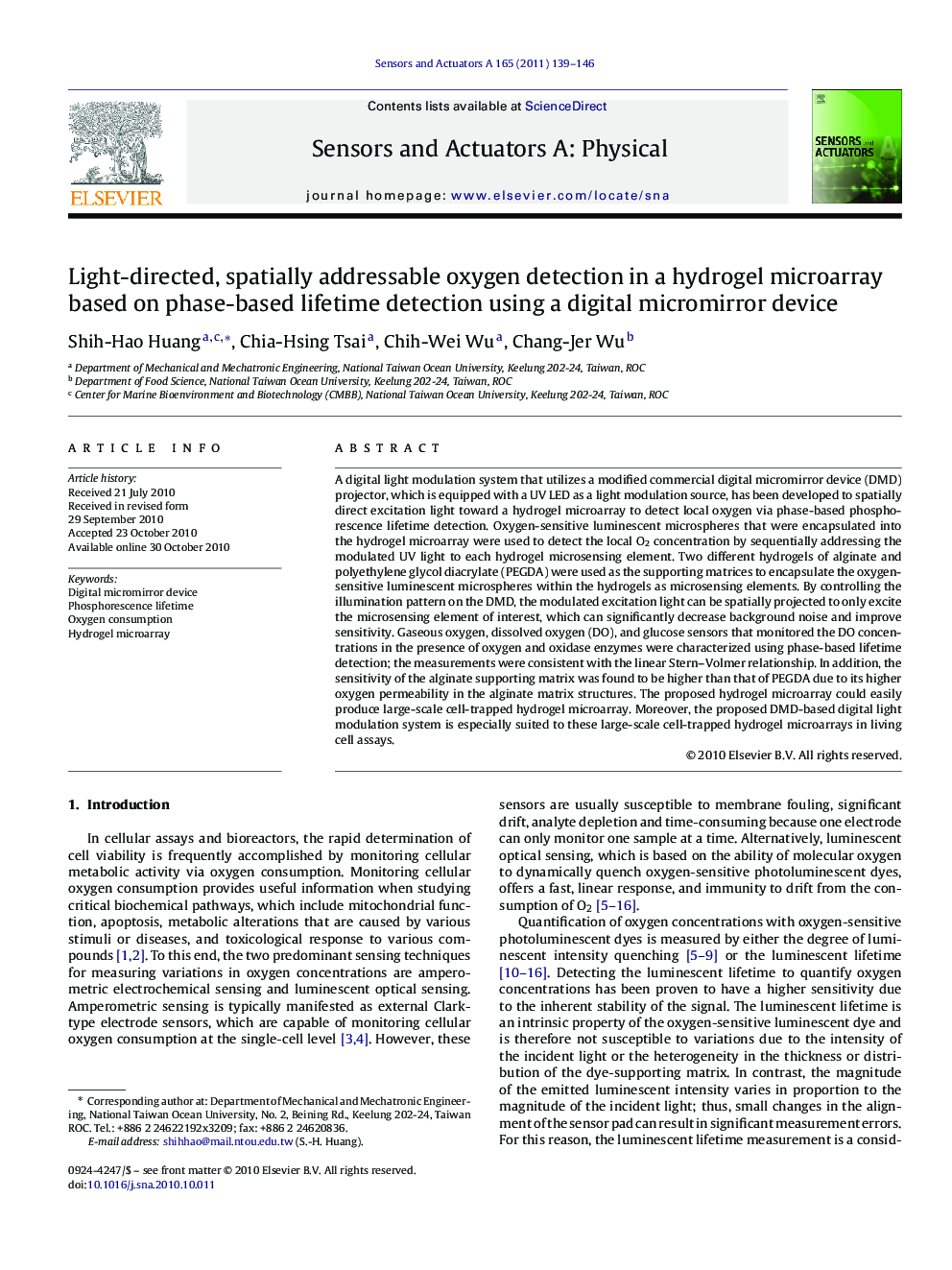| Article ID | Journal | Published Year | Pages | File Type |
|---|---|---|---|---|
| 738243 | Sensors and Actuators A: Physical | 2011 | 8 Pages |
A digital light modulation system that utilizes a modified commercial digital micromirror device (DMD) projector, which is equipped with a UV LED as a light modulation source, has been developed to spatially direct excitation light toward a hydrogel microarray to detect local oxygen via phase-based phosphorescence lifetime detection. Oxygen-sensitive luminescent microspheres that were encapsulated into the hydrogel microarray were used to detect the local O2 concentration by sequentially addressing the modulated UV light to each hydrogel microsensing element. Two different hydrogels of alginate and polyethylene glycol diacrylate (PEGDA) were used as the supporting matrices to encapsulate the oxygen-sensitive luminescent microspheres within the hydrogels as microsensing elements. By controlling the illumination pattern on the DMD, the modulated excitation light can be spatially projected to only excite the microsensing element of interest, which can significantly decrease background noise and improve sensitivity. Gaseous oxygen, dissolved oxygen (DO), and glucose sensors that monitored the DO concentrations in the presence of oxygen and oxidase enzymes were characterized using phase-based lifetime detection; the measurements were consistent with the linear Stern–Volmer relationship. In addition, the sensitivity of the alginate supporting matrix was found to be higher than that of PEGDA due to its higher oxygen permeability in the alginate matrix structures. The proposed hydrogel microarray could easily produce large-scale cell-trapped hydrogel microarray. Moreover, the proposed DMD-based digital light modulation system is especially suited to these large-scale cell-trapped hydrogel microarrays in living cell assays.
